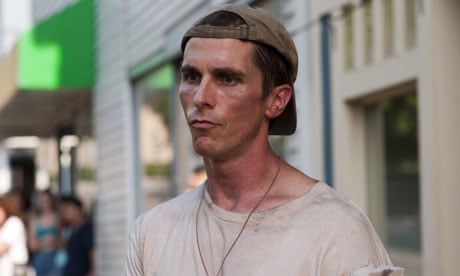The Fighter, David O Russell's Oscar-nominated true story of 90s boxer Micky Ward, played by Mark Wahlberg, is about a guy who slugs his way up from the tough streets of Lowell, Massachusetts. He has a troubled relationship with his half-brother and trainer Dicky Eklund (Christian Bale), a former boxer who is now addicted to crack but who finally appears to confront his demons, at least partly as a result of a television documentary being made about him as the movie begins: we see the camera crew following Micky and Dicky around.
This documentary really did exist. Entitled High on Crack Street: Lost Lives in Lowell and directed by Maryann DeLeo and Richard Farrell, it was transmitted on US TV in 1995 and is now available for free on the web.
Watching High on Crack Street after seeing The Fighter is a fascinating, discomfiting experience, one that raises questions about how "reality" is reshaped into cinema fiction. This documentary works as a kind of B-side to The Fighter. Or maybe The Fighter is the B-side to High on Crack Street.
The contexts offered by these two films are very different. David O Russell's film puts the agonised story of Dicky – the hopeless drug-addict and screw-up – into the context of a hopeful, positive comeback story. It looks at first as if Dicky is holding Micky back, and that Micky, out of tragically misguided loyalty, is allowing it to happen. But that's not how it plays out. Micky really does need family more than he thinks.
This is very much not how Dicky's story is presented in DeLeo and Farrell's film, but as it was made in 1995 rather than 2010 it could be argued that Russell has 15 years of extra perspective. The other characters in Dicky's story here are not his brother and his family – although they certainly appear – but the two other addicts that show up at the squalid crackhouse where Dicky wastes his days and nights. Brenda is a pregnant prostitute with no front teeth, who flits in and out of rehab and works to service her addiction and pay for her upcoming abortion: the 1995 price-tag is $395 and there is no free cover. There is also her crack-user boyfriend Boo Boo, a hopeless, bloated, amiable goof. Brenda appears to be far more intelligent than either Boo Boo or Dicky: sharp, despairingly insightful about her addiction. There is no hopeful "comeback" narrative offered here.
Dicky, Brenda and Boo Boo expose something mannered in the performance of Christian Bale; they are the messy, unglamorous real thing in the way that Hollywood acting isn't. Specifically, Dicky and his ferocious mother have a gentle, wondering, lost look to them that Bale and Melissa Leo don't conjure up, despite their Oscar nominations. If a TV programme were to be made about Dicky's crackhouse now, it isn't too much of a stretch to imagine it being framed as a kind of "reality" show, with live coverage and viewers voting on who gets to go into rehab.
Yet it's too easy to say that DeLeo and Farrell's documentary is wiser or realer than Russell's movie. Perhaps the point is that, sugary and uncool as it is to say out loud, family was important to poor Dicky and does appear to have effected a kind of redemption over a long period of time – something to which the 1995 documentary could not have had access. Either way, the DeLeo/Farrell documentary deserves a look.

Comments (…)
Sign in or create your Guardian account to join the discussion